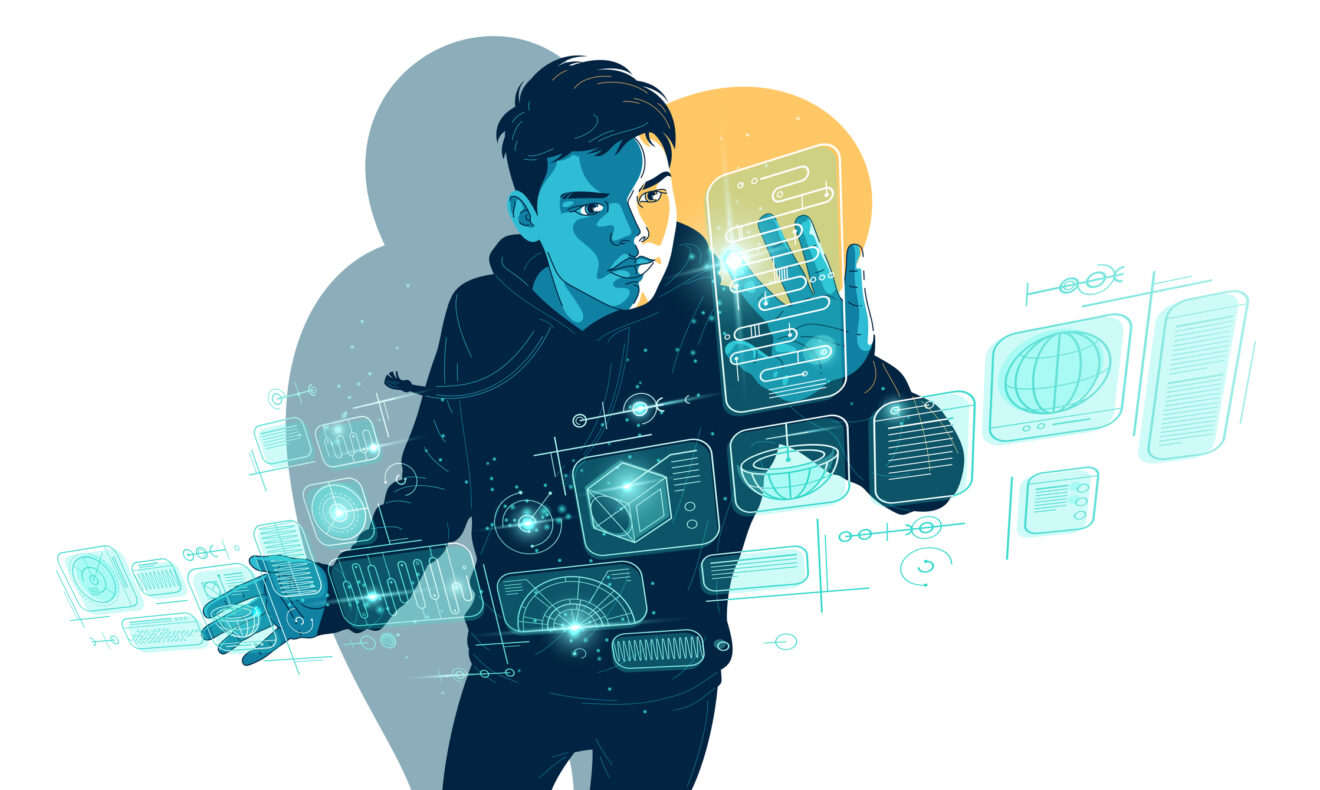
Edtech products and solutions are continuously changing the present and future of how we learn, teach and structure the classroom. Increasingly, schools are seeking new edtech trends for opportunities to transform the campus experience and shift toward learner-centric teaching models that raise engagement and encourage active learning. Educators are also benefiting from this shift as more tools arrive to support their teaching strategies and continued professional development.
As tech enthusiasts eager to bring innovation to schools, we want to highlight five edtech trends that are shaping — or soon will be shaping — education’s classroom and campus experience.
1. Digital IDs offer seamless experiences
Schools are looking for ways to digitize and streamline the student campus experience, and one edtech trend some of us already are using transforms the use of student IDs in managing student movement, transactions and campus safety.

In many schools, students are typing in their student identification number or swiping a physical card when purchasing lunch or checking out library books. However, typing identification numbers opens risks for fraudulent use, while traditional ID cards can be easily forgotten, stolen or lost, thereby compromising campus security.
Schools that adopt digital IDs that can only be accessed via a dedicated app on a student’s personal mobile device are finding new ways to automate and digitize campuses and transactions. The app also can enhance student safety by transforming phones into connected devices to monitor students’ whereabouts on school grounds through touchpoints and scanners.
These digital IDs help create an interconnected system that creates less work for school staff and administrators.
2. Mixed reality, virtual reality support more active learning
The 2020 pandemic brought on the use of hybrid learning environments where educators were using web conferencing and collaboration tools to deliver their lessons. As many students have returned to in-class learning, the need for education technology remains but calls for a more immersive method for holding student attention and raising engagement. Innovative approaches that use the latest in virtual reality could be leveraged to allow students to virtually connect with other students their age from around the world in real time.
For instance, augmented reality is among edtech trends that can help bring history and science to life in ways we’ve never seen before. In the next five years, mixed reality classrooms will become the norm and help students prepare for an increasingly digital world in their later academic and professional careers.
3. Edtech integration, connectivity will drive more smart schools
In 2023 and beyond, we can expect to see school campuses and classrooms explore more integration and seamless connectivity among technologies. For example, some schools are already integrating bi-directional casting between student tablets and interactive displays at the front of the classroom. Teachers can cast students’ individual screens onto the main display and empower students to share their ideas and work with the entire classroom.
Edtech trends like this gives students more freedom to interact and think creatively together. It can replace a monologue by the teacher with an engaging dialogue among learners that is far more productive in knowledge retention and the development of problem-solving skills.
Displays in the classroom can also integrate with digital signage installed around campus, from the front office to the sports field. Using content management software, the cloud and a strong wireless network, the resulting smart-school ecosystem can help to strengthen the school community, increase school-to-home communication and transform student outcomes. It also can enable crucial rapid notification and response in the event of an emergency.
4. Edtech trends can aid accessible and equitable education
When classrooms went online in 2020, the gap between students who had and did not have access to broadband internet and digital tools at home was amplified. According to the US Department of Education, nearly 15 million to 16 million K-12 learners had insufficient broadband access or access to devices to support learning at home. Those without access, unfortunately, fell behind and educators are now working to help them catch up to their peers.
In much the same way that public libraries have historically provided people with equal access to information, schools will need to step up to provide students with equal access and opportunities to education and emerging technologies. This goes beyond just providing one-to-one tablets or laptops; it requires giving students guidance on how to use classroom tools in meaningful ways that work with how they learn best.
Strategies to consider include using personalized learning tools with algorithms that help track each student’s progress. Interactive displays in classrooms offer other innovative improvements, such as screen recording so teachers can share notes and lessons with students to review at home at their own pace. Live on-screen captioning can help hearing-impaired or second-language learners participate more equitably in the classroom and increase literacy and engagement for all.
Ultimately, one of interactive technology’s greatest benefits to equity is helping students to take ownership of their learning.
5. Educators will need a new platform for knowledge sharing
For many years, educators have turned to the education community on Twitter and other social media platforms to network, find inspiration and share fresh ideas for sparking active learning in our classrooms. Many of us have built followings and connections among industry peers on social media. However, recent developments with various social media platforms have led some long-time users to consider leaving them altogether or switching to alternative sites such as Discord or Mastodon.
Looking ahead, more educators will seek a new place where they can create an online community for teachers, by teachers. On a new platform completely dedicated to education, teachers can go beyond the conversations from Twitter and create new opportunities for professional discourse and development that inspires better learning outcomes for students.
As new technologies emerge in the education sector, the dynamics in which we connect across campuses are constantly shifting, creating a space for responsible innovation. The possibilities of digital technology offer unprecedented ways to transform the learning experience. It will be imperative for schools to provide the proper tools and systems to meet the demand and need for dynamic, tech-driven learning environments.
Alex Seage, who built a career leading technology and innovation in the cruise industry, leveraged his skills in 2021 by joining his alma mater, Christopher Columbus High School, as senior director of technology and innovation.
Micah Shippee, Ph.D., an author, consultant and speaker, is the innovative, outside-the-box director of education technology consulting and solutions for Samsung Electronics America, where he focuses on the adoption of emergent technology through the development of an innovative culture.
Opinions expressed by SmartBrief contributors are their own.
_________________________
Subscribe to SmartBrief’s FREE email newsletter to see the latest hot topics on EdTech. It’s among SmartBrief’s more than 250 industry-focused newsletters.
